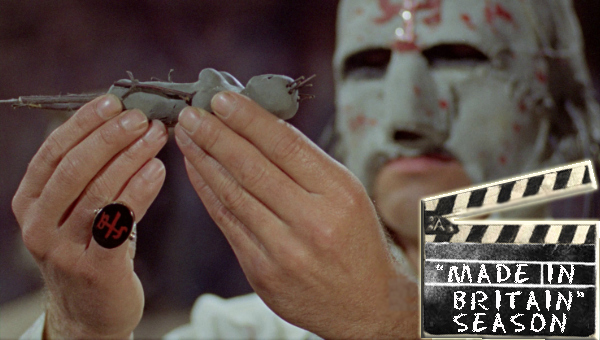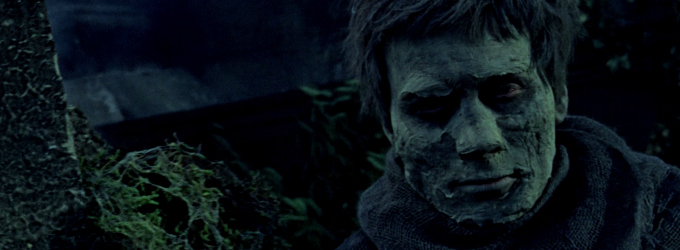httpvh://youtu.be/oynquOmh3SM
Anyone attracted by the throat-grabbing title and hoping for lashings of brain-munching action should look elsewhere: Hammer’s undead thriller from 1966 is a much tamer affair than today’s audiences might expect. But those who are more familiar with Hammer’s full-blooded style should find much to enjoy. THE PLAGUE OF THE ZOMBIES is one of those rare zombie movies made before George A. Romero’s landmark horror opus NIGHT OF THE LIVING DEAD; so while there is a reasonable amount of Hammer’s trademark bright red blood, there’s certainly none of Romero’s flesh-ripping cynicism.
… a standard Hammer Horror vehicle with a few fresh twists …
PLAGUE is, by and large, a standard Hammer Horror vehicle with a few fresh twists which distinguish it from the DRACULA and FRANKENSTEIN sequels the studio churned out with almost mechanical regularity. The familiar plot sees an educated man of reason (in this case Sir James Forbes, played by Hammer regular André Morell) called in to investigate a spooky series of unexplained goings-on in a remote community, and uncovers a sinister plot orchestrated by a suspicious upper-class toff. The village’s inhabitants start dropping like flies, with local doctor Peter (Brook Williams) at a loss to explain why. Worse still, the corpses are disappearing from their graves, with one being sighted shuffling around a nearby disused tin mine.
What sets PLAGUE apart from its studio siblings are the choice of monsters (zombies being fairly uncommon in cinemas at the time) and its setting: rural Cornwall, instead of the Mittel-European locations favoured by the vampire yarns. The zombies here have been summoned back to life through the practice of voodoo – a more traditional cinematic approach to reanimating corpses than Romero’s atomic radiation. Though the make-up is fairly unsophisticated by today’s standards, director John Gilling manages to rustle up a good few atmospheric moments.
The standout scene is a nightmare had by Peter, as a whole graveyard of corpses rise out of the earth and close in on him; the imaginative camerawork creates a deeply unsettling atmosphere that the rest of the film simply can’t match. It’s hardly surprising the sequence has been much imitated down the years. James Bernard’s insistent score nicely layers in additional spicy notes. Curiously, there is an underlying sexual suggestiveness to these “undead”, an idea seemingly pinched from those who were ‘turned’ by Dracula. Are these zombies driven by basic impulses other than hunger?
Morell is reliably sturdy as the sceptical Sir James …
The variable quality of performances on display prevents PLAGUE from being better known that it is. Morell is reliably sturdy as the sceptical Sir James, but Williams is flat in the younger lead role of Peter, and dreadfully bungles one key scene around the midway point. Diane Clare as Sir James’ daughter is rather more courageous than the usual Hammer girls, as she first tackles the local squire’s henchmen over their foxhunting and then heads out alone at night as she follows a friend in to the Cornish countryside. John Carson as Squire Hamilton enlivens proceedings in the second half, particularly when he locks horns with Morrell, and the fact that he sounds uncannily like James Mason doesn’t hurt either.
It may fall short of being a forgotten classic, but the film remains an interesting and colourful British horror made at a time when the Hammer studio was at the forefront of the genre.
The MADE IN BRITAIN season of restored classics continues on Tuesday 19th June when we’ll be reviewing THE MAN WHO FELL TO EARTH, screening at Cambridge Arts Picturehouse and cinemas across the country.



2 thoughts on “The Plague of the Zombies”
Comments are closed.